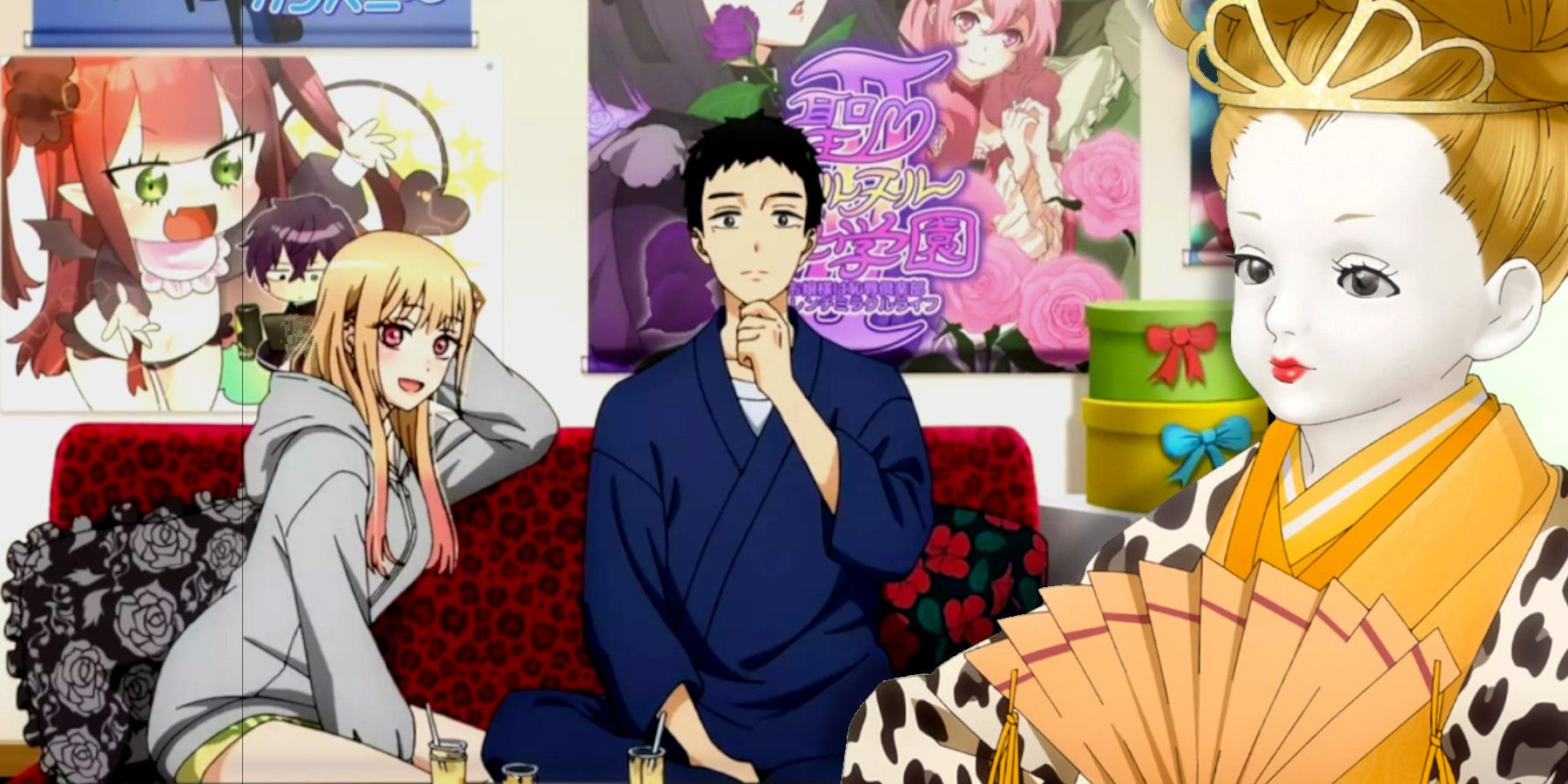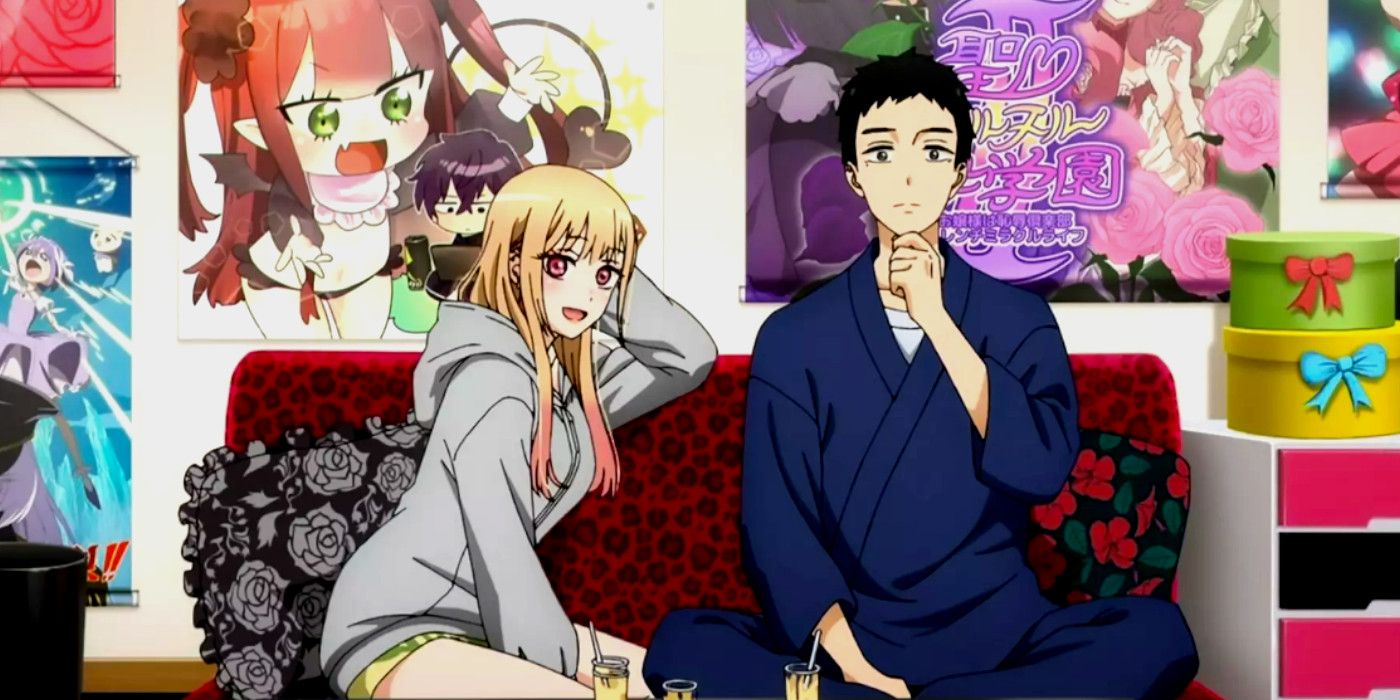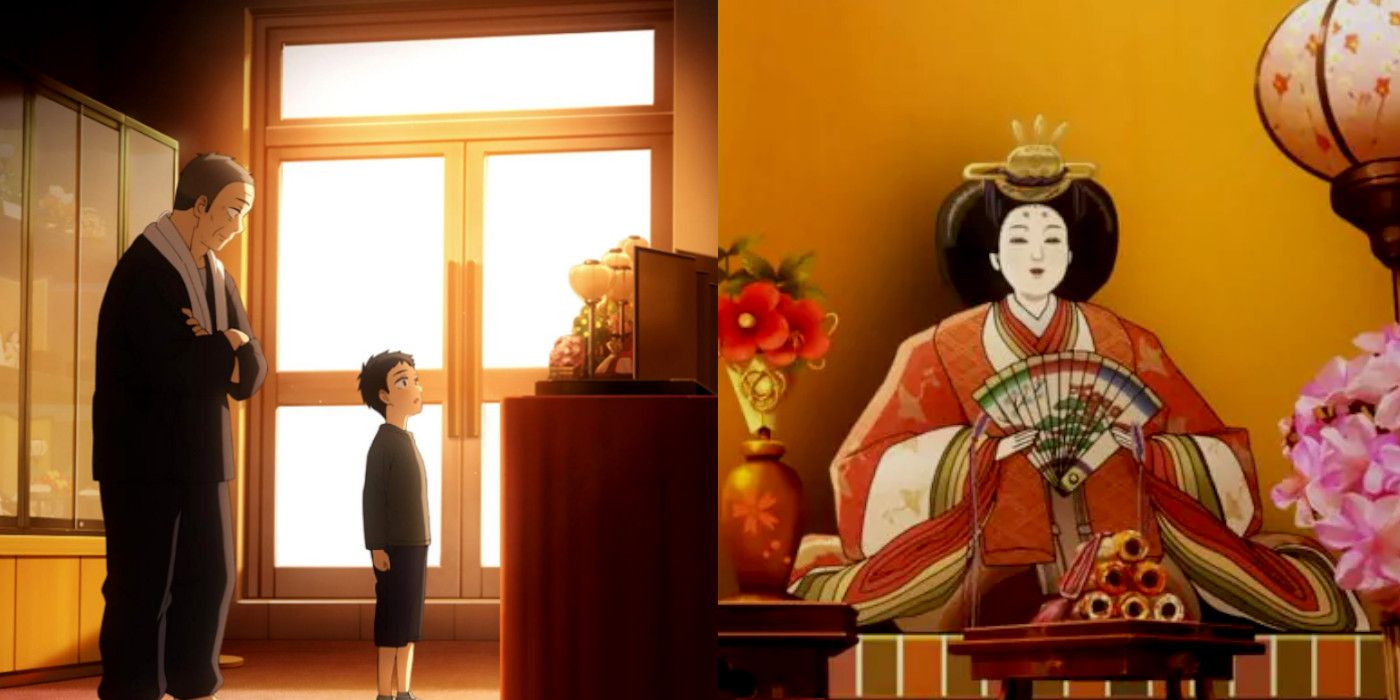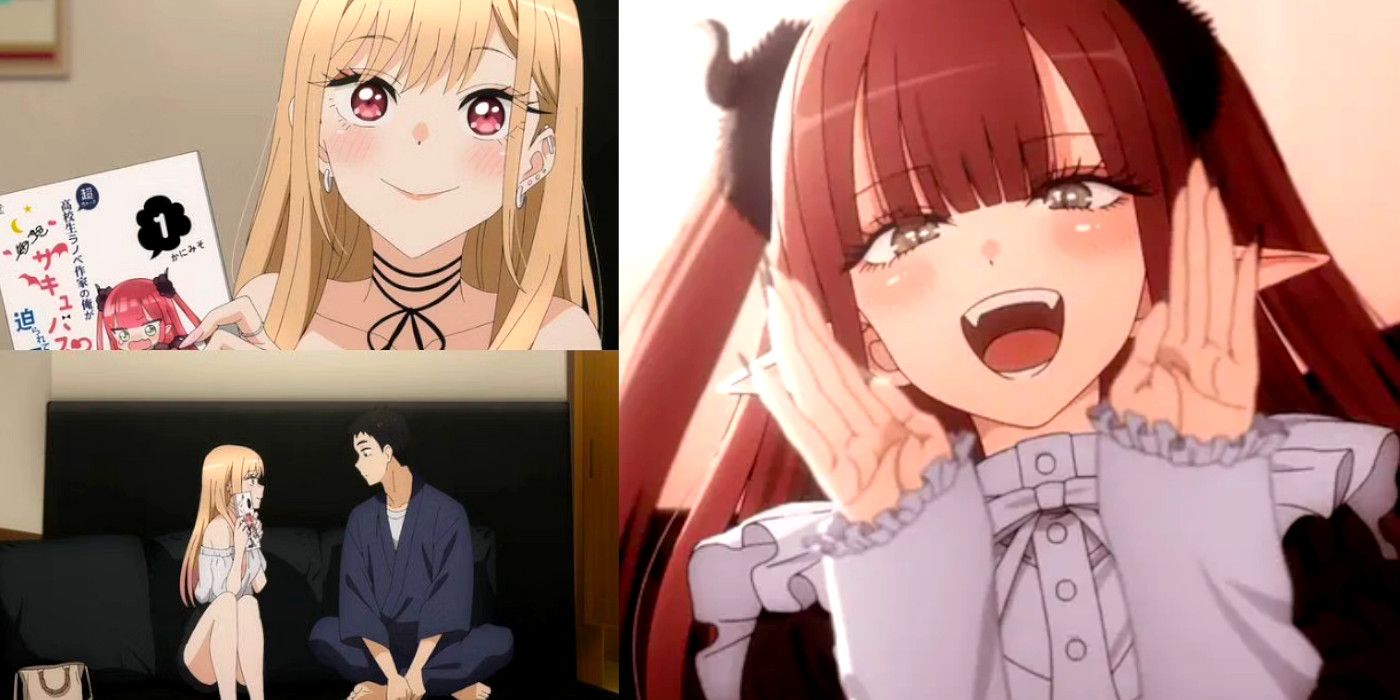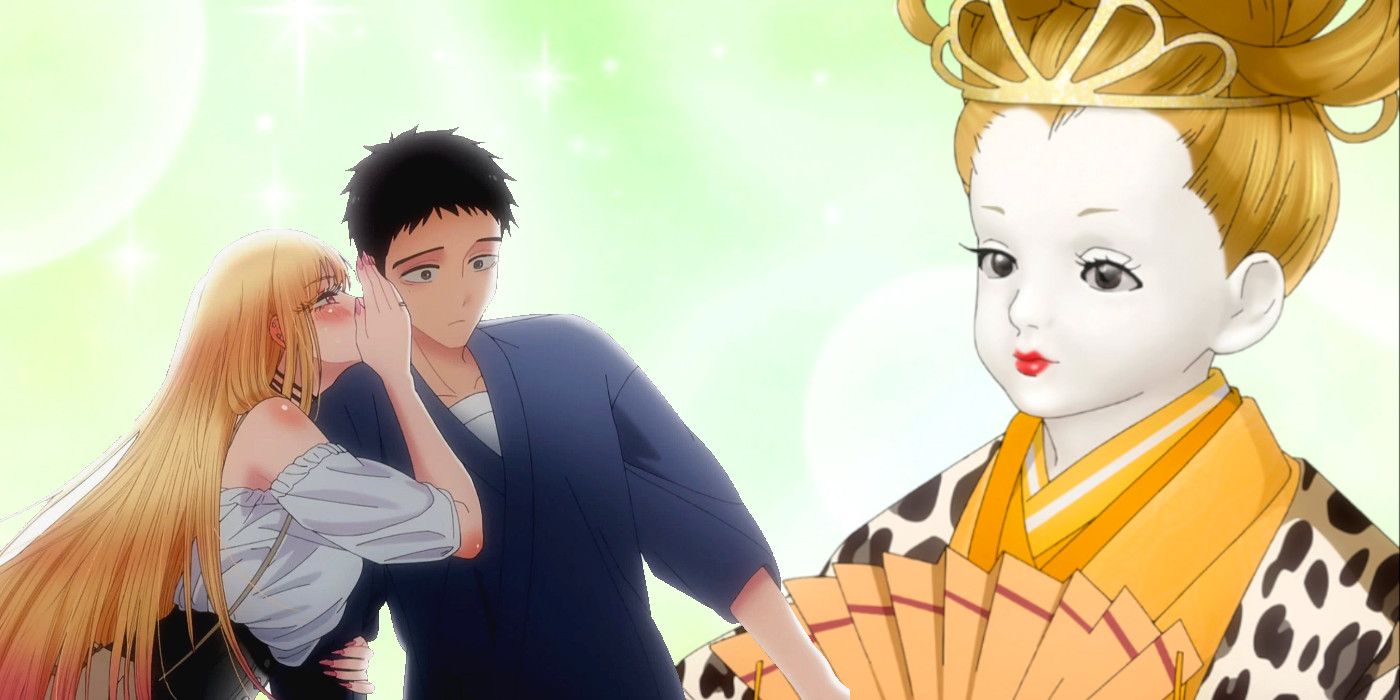Wakana Gojo and Marin Kitagawa are two sides of the same coin, heavily influenced by Japanese culture while existing in separate worlds. Gojo is stuck in the past, living and breathing the old-school traditions in his pursuit to become a Hina Doll master craftsman, or kashirashi, while Marin idolizes an entirely different aspect of Japan.
This outgoing otaku girl is obsessed with cosplay and lives more in the now, making impulsive decisions sprinkled with adorable slang. However, even with all their differences, Marin and Gojo could not be more compatible in My Dress-Up Darling, as one of the cutest anime couples of the Winter 2022 season.
Opposites Attract
Gojo's world was turned upside down when he found himself orphaned at a young age and sent to live with his grandfather, Kaoru the kashirashi. He found great comfort in the beauty of the Hina Dolls his grandfather crafted and decided then and there to dedicate his life to becoming a kashirashi himself. Unfortunately, his peers could not see the artistry in his passion, blinded by the lack of "manliness" associated with dolls, and subsequently shunned him from society.
Having spent most of his childhood years avoiding kids his age, Gojo's primary companion has been his grandfather, and it shows. The youngster has subsequently adopted certain mannerisms generally utilized by older generations, from cooking elaborate, traditional meals to his clothing choice (robe, sandals, and headband all the way) and uses more formal language as well. The concept of Manga Cafes and video games seem foreign to him, showing just how out of touch Gojo is with contemporary society.
Marin, on the other hand, is a trendy young lass who is obsessed with anything Anime-related and wants nothing more than to personify her beloved characters in cosplay. To say her cooking-style is modern may give the wrong impression, as her technique is less "designer food" and more "frozen tv-dinner," but there is definitely nothing traditional going on in this kitchen. Her wardrobe, however, gets a five-star rating on the chic scale. Marin is very fashion forward with a strong gyaru vibe, going so far as to consistently enhance her look with neoteric colored contacts (nothing old-school to see here.)
Marin's vocabulary choice is very colloquial and cutesy, particularly when she cannot contain her wuv for Gojo. She knows all the relevant Anime lingo and is happy to give anyone a quick lesson in the basics, while likely flashing some (unnecessary, yet not unappreciated) skin in the process. Marin's mentality can also be viewed as relatively modern, as she is openly sex-positive, which is a luxury that not all women have been able to experience. Archaic traditions give girls less freedom to express their individuality, especially regarding what society deems as appropriate clothing and sexual conduct.
The Symbolism Behind Hina Dolls
The concept of gifting Hina Dolls has been ingrained into the Japanese culture since before the Edo Period (1603–1868), and they are still highly revered in contemporary society. In Japan, the 3rd f March is dedicated to these lovely creations in a celebration called Hina Matsuri, which aims to honor the young girls of each household. Traditionally, Hina Dolls, also known as hina ningyo, are auspiciously gifted when a family welcomes a newborn girl into their midst, subsequently blessing the child with good fortune. These immaculate creations usually come in sets of three to five figures (or more), and it has become quite popular to dress the dolls as representatives of the Imperial Court members of the Heian period. Then, every year on 3 March, these hina ningyo are displayed in tiered settings similar to those depicted in Kaoru's shop in My Dress-Up Darling.
Initially, Hina Dolls were not created as playthings but as vessels to dispel impurities. Those who wished to cleanse themselves were told to make a doll and caress it along their skin before blowing on it and sending the potentially contaminated parcel down the river. Due to the doll's popularity among young girls, this superstitious custom eventually combined with hihina asobi (doll play) to create the traditions observed in Japan to this day. Hina Dolls continue to adapt, as some contemporary creations no longer adorn the traditional Imperial Court outfits but have opted for something more trendy and fashionable, emphasized by modern fabric prints and bold colors. It is unlikely that the ever-evolving Hina Doll custom will be forgotten any time soon, particularly since their rise in popularity thanks to My Dress-Up Darling.
Otaku Culture (in Japan)
Otaku, which has officially made it into the Oxford Dictionary, generally refers to the admiration of Japanese Pop Culture, usually specified (but not exclusive to) the Anime and Manga industries. Unfortunately, a level of social awkwardness is regularly associated with all things otaku, including its official definition. Marin clearly diverts this stereotype, which is reflective of the international acclaim that otaku has inspired on a global level. This popular Japanese culture has taken the world by storm, helping to transform these previously stigmatized "nerds" into acceptable enthusiasts, now celebrated for their passion.
Cosplay forms a big part of otaku, as many anime and manga devotees want nothing more than to manifest their favorite fictional characters. Cosplay comes with its own set of rules in Japan, as it is prohibited to perform in public outside of events or specialized venues, such as Akihabara, the otaku hub of Tokyo City. This restriction prevents misrepresentation of the brands' image in the public eye, which could entice negative associations with that characters' image. For example, a drunk and disorderly Shinju Inui cosplayer does not conform to the My Dress-Up Darling standards.
Marin is the perfect personification of the contemporary Otaku girl, as her passion for Japanese pop culture is so fierce that it's contagious. Not only does this charmer spend most of her free time absorbed in some form of Anime, manga, or video game, but it seems that the only reason that she even has a job is to pay for her cosplay obsession. Unlike Gojo, Marin embraces her passion to the fullest, proudly boasting about her potentially controversial love for such highly sexualized content. Her character has become so inspiring that some fans are now cosplaying Marin herself (as well as cosplaying Marin's cosplays, breaking the fourth wall on another level entirely).
My Dress-Up Darling's Social Impact
The real-life inspiration behind Wakana Gojo is sharing in the Anime's success, as Yoshiaki Suzuki's Hina Dolls have suddenly become outrageously popular in 2022. Yoshiaki Suzuki is the mastermind behind some of the first modernized (and blonde) Hina Dolls after discovering that combining the traditional Japanese technique with bolder, more contemporary fabric choices made his products appealing to both older and younger generations (and especially so among Anime enthusiasts). The Suzuki Ningyo shop, for which he works as a lead designer, reported that they had sold out of all available modernized Hina Dolls, also known as The BELL'S KISS series, by the time episode 4 of My Dress-Up Darling aired.
The influence that Anime has officially come full circle, as the correlation between the popularity of My Dress-Up Darling and Yoshiaki Suzuki's creations is indisputable, proving that Otaku culture can have a significant and positive influence on people's lives (just like Marin). It is refreshing to see that the origin of these fans' admiration is also reaping the rewards, and it is not just the fictional characters and Shinichi Fukuda who are being celebrated. Authenticity is, ironically, a vital component of the successful cosplay mentality, and purchasing iconic Hina Dolls from the source of inspiration is one of the best ways to honor this Japanese custom.
Sources: Kokoro, Crunchyroll, and JapanInsider

